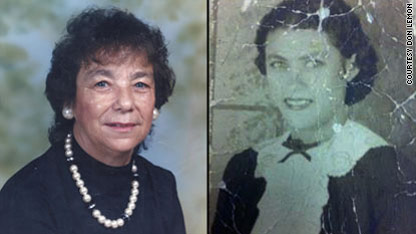Biracial versus black: Thought leaders weigh in on the meaning of President Obama’s biracial heritage
theGrio
NBC News
2012-11-19
Patrice Peck
“If I’m lucky enough to have children, I won’t tell them that Barack Obama was America’s first black president.”
Thus began columnist Clinton Yates’ piece, “Barack Obama: Let’s not forget that he’s America’s first bi-racial president”. Published on The Washington Post website two days after the 2012 election, Yates’ piece explores the notion that singling out President Obama’s African heritage alone has resulted in an incomplete narrative of his identity.
“As a black man who plans to eventually start a family with my white girlfriend, I’m going to tell [my future children] that Obama was the first man of color in the White House and that America’s 44th president was biracial,” writes Yates. “What would I look like telling my kids that a man with a black father and a white mother is ‘black’ just because society wants him to be?” Yates’ stance on President Obama’s racial identity points to an on-going, complicated debate surrounding the president’s race and how he chooses to identify himself.
Since Obama’s second presidential election win, countless media outlets have analyzed the major support in voter turnout exhibited by African-Americans and Latinos for the president. At the same time, an overwhelming amount of racist backlash surged on Twitter for several days, signaling the fact that, for better or for worse, race will likely always be a predominant element to consider during Obama’s term as president.
Yet, most reports on and reactions to President Obama have failed to mention his biracial heritage. It is rarely addressed in discussions concerning how the public identifies Obama, or critiques of how the president identifies himself. Yates’ consideration of Obama as the “first bi-racial president” is rare in its vociferous proclamation to define the man by both lineages.
To widen this limited discourse, we asked some of the nation’s leading authorities on biracial and multi-racial issues to share their thoughts on the president’s self-identification as black, and the possible stakes of not addressing his bi-racial identity more directly. These leaders offer interesting and at times surprising perspectives on what it means to have not only a black man, but also a biracial man in the White House.
Here is what they told theGrio about this historic first. How do you think President Obama’s bi-racial ancestry influences the nature of his presidency?
…Steven F. Riley, founder of MixedRacesStudies.org
In the paper “Barack, Blackness, Borders and Beyond: Exploring Obama’s Racial Identity Today as a Means of Transcending Race Tomorrow,” I explained that the president is black for three different reasons. I used a sociological framework, an ethnological framework, and a psychological framework. Number one, I say he’s black because he says he is. Number two, his heterogeneity, or his mixed background, is no different from people who are black. And then lastly, I say he’s black because he looks black, from a sociological viewpoint…
…Yaba Blay, author of (1)ne Drop: Shifting the Lens on Race and artistic director of the multiplatform (1)ne Drop project
Everyone seems to be negating President Barack Obama’s own story. The man himself has said publicly in print that, yes, his mother is white; yes, he is technically bi-racial, mixed race, whatever the language is people choose to use, but in this racialized society he is seen as a black man. And for that reason he identifies as black…
…Andrew Jolivétte, Associate Professor at San Francisco State University and editor of Obama and the Biracial Factor: The Battle for the New American Majority
For mixed people, being mixed you identify differently at different times and in different situations. I think the president is no different, so [a bi-racial] child still can take pride in [the fact] that President Obama is a bi-racial president. But he’s also a black president. I don’t think that they’re mutually exclusive. And that’s what happens often in politics when it comes to policy, that it has to be one or the other, not some sort of combination of policies that can be good. Because he’s bi-racial and always compromising and trying to find the balance between two different identities, I think he tries to do the same things in terms of his policy…
…Stephen Murphy-Shigematsu, Professor of Ethnic Studies at Stanford University and author of When Half is Whole: Multiethnic Asian American Identities
I think his identifying [as African-American] is very positive. On the other hand, I think there’s nothing creative or innovative or groundbreaking or revolutionary about [his identifying as black.] It’s very much following the status quo of the way that a majority of people expect him to identify… I personally didn’t have a lot of expectations about his ability to really go beyond what would be the mainstream position in terms of how he labeled and located himself. I have hopes that he might help us to go beyond these kinds of rigid racial classifications and categories. I think he could do that if he was able to identify himself more openly with all the different parts of his heritage…
Read the entire article here.
